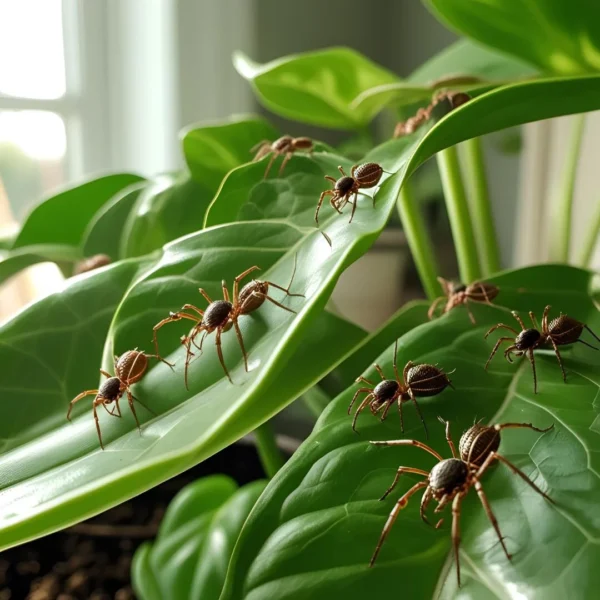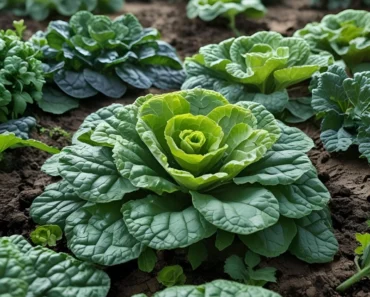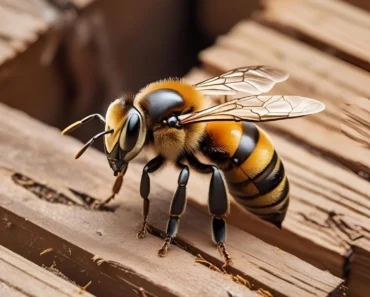Spider mites are among the most common and frustrating pests that gardeners face. Tiny though they are, these eight-legged arachnids can wreak havoc on plants by feeding on their sap, resulting in speckled leaves, weakened plants, and even death if untreated. Fortunately, there are numerous effective and easy ways to control spider mites and protect your garden naturally and safely. This article presents 10 proven tips and tricks for controlling spider mites with minimal chemicals and effort, ensuring healthier plants and a thriving garden.

1. Regular Inspection and Early Detection
Early detection is crucial. Spider mites are so small they might be overlooked until damage is visible.
-
Inspect plants regularly, especially the undersides of leaves where mites congregate.
-
Look for tiny speckles, discoloration, fine webbing, or leaf drop.
-
Use the white paper test by tapping foliage over white paper and watching for tiny moving dots (mites).
-
Detecting an infestation early allows more manageable control options.
2. Spray With Water
Spider mites dislike moisture and are often vulnerable to physical removal.
-
Use a garden hose with a spray nozzle to blast mites off leaves and webs.
-
Focus on undersides of heavily infested leaves.
-
Repeat spraying every few days to reduce populations, especially when weather is warm and dry.
-
This method is safe, chemical-free, and can be the first line of defense.gardendesign+2
3. Increase Humidity and Water Plants Regularly
Spider mites thrive in hot, dry conditions.
-
Misting plants daily or placing them in higher humidity zones reduces mite reproduction.
-
Group plants together to create microclimates.
-
Indoor plants can benefit from humidifiers or pebble trays with water beneath pots.
4. Use Insecticidal Soap or Horticultural Oils
Organic soaps and oils suffocate spider mites on contact and break their life cycle.
-
Apply insecticidal soap sprays or neem oil according to label instructions.
-
Spray thoroughly, covering both upper and lower leaf surfaces.
-
Repeat every 7–10 days to target new hatches.
-
Avoid spraying during the heat of the day to prevent leaf damage.
-
These treatments are safer than broad-spectrum pesticides and help conserve beneficial insects.ohioline.osu+1
5. Encourage and Introduce Natural Predators
Biological control uses predators to keep spider mite populations in check.
-
Ladybugs, lacewings, and predatory mites (e.g., Phytoseiulus persimilis) feed on spider mites.
-
Purchase predatory mites for greenhouse or outdoor release.
-
Maintain plant diversity to support natural predator populations.
-
Avoid broad-spectrum insecticides that kill beneficial predators.agrigem+1
6. Remove and Destroy Infested Plant Material
Cutting away affected leaves or plants limits mite spread.
-
Prune heavily infested parts and dispose of them in sealed bags away from plants.
-
Avoid composting infested material to prevent reinfestation.
-
Clean pots and tools to reduce residual mite presence.
7. Quarantine New Plants
Prevent introducing spider mites from outside by quarantining new plants.
-
Isolate new specimens for 1–2 weeks.
-
Inspect thoroughly and treat immediately if mites appear.
-
This approach protects entire collections and avoids widespread outbreaks.extension.oregonstate
8. Use Homemade Remedies with Caution
Some garden enthusiasts use homemade sprays such as garlic, pepper, or essential oils.
-
While occasionally effective, results may vary.
-
Always test sprays on a small part of the plant.
-
Avoid using concentrated or unknown compounds that harm plants or beneficial insects.gardendesign
9. Maintain Proper Plant Nutrition and Care
Healthy, vigorous plants resist mites better.
-
Avoid over-fertilizing with nitrogen, which can encourage soft growth favored by mites.
-
Keep plants well-watered but avoid waterlogging.
-
Mulch and apply organic compost to improve soil health and plant immunity.
10. Chemical Control as Last Resort
If infestations are severe and uncontrollable, chemical miticides may be necessary.
-
Choose miticides labeled for spider mite control.
-
Rotate different modes of action to prevent resistance.
-
Follow label instructions carefully.
-
Use targeted applications, avoiding pollinator bloom times and areas.
Summary Table of Spider Mite Control Methods
| Method | Description | Pros | Cons |
|---|---|---|---|
| Regular Inspection | Early detection | Prevents spread | Requires diligence |
| Water Spray | Dislodges mites physically | Safe, non-toxic | Temporary effect |
| Increase Humidity | Suppresses reproduction | Natural, non-toxic | Not always practical |
| Insecticidal Soap/Oils | Contact kill agents | Organic, target-specific | Requires repeated application |
| Promote Predators | Uses natural enemies | Sustainable | Dependent on environment |
| Remove Infested Material | Pruning and disposal | Reduces population | May harm plant aesthetics |
| Quarantine New Plants | Preventive isolation | Limits introduction | Requires awareness |
| Homemade Remedies | Natural sprays (e.g., garlic, pepper) | Readily available | Variable effectiveness |
| Chemical Miticides | Targeted chemical sprays | Effective on severe infestations | Risk of resistance, toxicity |
Conclusion
Spider mites may be tiny, but they can seriously damage plants if left unchecked. However, there are numerous easy, natural, and effective strategies to manage and control spider mite populations. Regular inspection, physical removal, maintaining humidity, encouraging beneficial bugs, and using organic soap or neem oils are excellent first lines of defense. More severe infestations may require judicious use of miticides, but integrating multiple control methods together provides the best sustainable outcomes. Armed with these approaches, gardeners can protect their plants, conserve the environment, and cultivate healthy, thriving gardens free of spider mite woes.
- https://www.youtube.com/watch?v=bqCBIP9TmcY
- https://www.reddit.com/r/gardening/comments/hvzk7y/in_desperate_need_of_help_with_spider_mites/
- https://www.gardendesign.com/how-to/spider-mites.html
- https://ucanr.edu/site/uc-marin-master-gardeners/article/controlling-spider-mites-your-garden
- https://www.agrigem.co.uk/advice-centre/agrigem-blog/gardening-blog/the-chemical-free-way-of-controlling-spider-mite/
- https://ohioline.osu.edu/factsheet/HYG-2012-11
- https://www.gardenersworld.com/how-to/solve-problems/red-spider-mites/
- https://extension.oregonstate.edu/catalog/how-recognize-manage-spider-mites-home-garden
- https://www.missouribotanicalgarden.org/gardens-gardening/your-garden/help-for-the-home-gardener/advice-tips-resources/insects-pests-and-problems/insects/mites/spider-mites-outdoors






